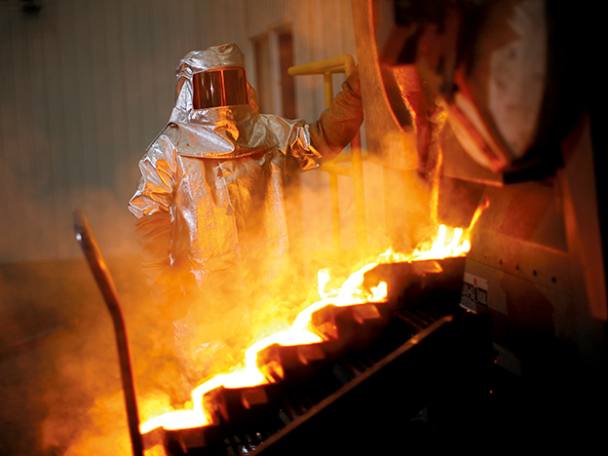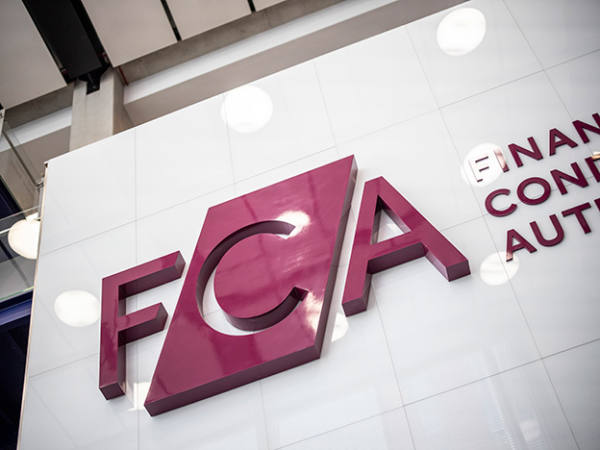At last month’s Denver Gold Forum, the most prominent corporate event in the gold mining calendar, some attendees were just as interested in the precious metal producers’ copper holdings. Analysts noted the clear shift in focus from professional investors, who had previously seen the red metal as a valuation drag.
Free cash flow positive
Dividend-paying
Expensive production and rising costs
Intensive capex and project risk
Weaker metals prices
Permitting uncertainty in Peru
Like gold, copper is not trading strongly right now but has good long-term drivers. At the same time, gold is getting more expensive to mine, and there is not so much to recommend it as a saleable product because of rising interest rates and the seemingly unassailable strength of the US dollar.
“Companies in the main haven’t controlled cost inflation as well as other mining peers,” said BMO Capital Markets analyst Colin Hamilton, in a note on the Denver gathering. He also pointed to growing questions over “gold’s utility” and “position in an ESG (environmental, social and governance) world”.
That outlook does not bode well for Hochschild Mining (HOC), a Peru-focused operator watching costs rise as it approaches the peak of an intensive period of capital spending.
The group’s market capitalisation has also tanked in the past year as first political events in Peru have raised worries of halts to production, and forecasts for earnings then dropped significantly in as the gold price has faded. The jurisdictional issues were made clear last November when Peru’s prime minister, citing environmental concerns, announced Hochschild’s mines would be closed as soon as possible. Operations did not stop and the government has been more conciliatory since, but investors remain rattled.
Short John Silver
The group mines both gold and silver, leaving it more exposed to this year’s 18 per cent decline in the cheaper precious metal. Gold, by contrast, is down 8 per cent in US dollars. Peruvian politics and historic metals exposure also help explain why Hochschild plans to become a pan-Americas gold-focused operation, via the acquisition of a pre-revenue project in Brazil, Mara Rosa, and the scoping of a new mine in Canada through an earn-in arrangement.
These assets could take some of the pressure off its largest mine, Inmaculada in Peru, but also risk piling on capex (capital expenditure) requirements just as conditions get tougher.
Project spending is forecast to hit $287mn (£253mn) this year and $223mn in 2023, according to FactSet-compiled consensus figures. Both estimates are significantly higher than in recent years. There is headroom in the group’s agreed debt facility, but the balance sheet has already swung to a net debt position and Peel Hunt sees net debt at $170mn by the end of 2023.
The other side of this coin is that spending heavily is necessary given the nature of mining metals: exploration and expansion must happen if the ounces taken out of the ground are to be replaced.
Management is facing the imminent closure of one mine in Peru and is waiting on a permit from the government to confirm a long-term extension of the environmental impact assessment permit. This will effectively decide whether the Inmaculada mine, Hochschild’s key earnings driver, can keep operating.
The group has already diverted spending. In August, Hochschild said it had decided to slow Inmaculada’s brownfield exploration programme given that “the resources added in the last few years have taken the mine-life to well over 10 years” – although the permitting uncertainty won’t have helped, either. The priority for allocating capital is now Mara Rosa, a project in an easier jurisdiction and which handed Hochschild a 56 per cent increase in metals reserves when the company completed the takeover of the mine’s owner this year for $123mn.
Reshuffle
By the end of 2024 Hochschild could have its Brazil venture in production, its San Jose silver mine in Argentina still chugging along and an amended permit in place for Inmaculada.
Getting to this point will take some doing, however. For a start, now is not an ideal time to increase leverage. Hochschild refinanced a $300mn debt facility last year, accepting a higher interest rate to withdraw an extra $100mn and kick the maturity out two years to 2026. But this means annual interest costs have surged from around $5mn at the start of the year to $16mn now, as US interest rates have climbed. The group has enough cash flow to cover this, but profits will take a hit.
Hochschild has a good relationship with its local lenders and so further refinancing would be possible, if needed. Nor does the group view the $180mn to $200mn build cost of the new mine as a “huge amount” to pull together. If operating profits fall back because of lower precious metals prices, spending could be cut elsewhere in the business.
One source of flexibility is Hochschild’s ‘earn-in’ arrangement for the Snip project in Canada, under which it must spend C$100mn (£64mn) to take a 60 per cent stake in the project. This has a spending floor each year but Hochschild can pay partner Skeena Resources (CA:SKE) C$1mn to slow the capital requirements down. A prefeasibility study is expected by the end of the year that will give more detail on the time needed to get the mine to production, as well as the costs involved.
Shutting Pallancata, the miner’s other Peruvian mine, will also incur an upfront cost but would be a longer-term help. It was lossmaking in the first half, with an all-in sustaining cost (AISC) $33 an ounce (oz), well above the average realised silver price of $23.70 an oz, and this will likely be its last full year of operation.
There is hope in the mine supporting Hochschild’s profits in the future, however. “Even though Pallancata short-term is facing challenges, I would say, the medium to long term is beginning to look very, very attractive,” said chief executive Ignacio Bustamante in August. Those attractions refer to drilling outside the existing permit area, however, so a whole new mining licence would be needed to get this off the ground.
Current investors may see this as a challenge too far given the recent struggles with permitting: on top of the issues with Inmaculada, shares in the group’s rare earths spin-off Aclara Resources (CA:ARA) tanked after it pulled a permit application in Chile in March. Aclara, in which Hochschild kept a 20 per cent stake following its Toronto listing, is down four-fifths on its listing price, even as interest in non-Chinese rare earths operations has soared.
Coming up
The City’s views on Hochschild’s near-term profitability vary widely. BMO expects a 1¢ a share loss in 2022, while brokers Peel Hunt and Panmure Gordon sees earnings of 8.4¢ and 17.9¢, respectively. One reason for the difference is the range of items in analysts’ cost estimates. Peel Hunt, for example, an AISC of $1,650 an ounce (gold equivalent), compared with the company’s guidance of $1,330 to $1,370.
This shows the ongoing challenge of keeping all-in costs, which includes capital spending, below the gold price. Hochschild says hydroelectric power had made energy cost control at Inmaculada and Pallancata fairly simple, although other hikes in consumables such as diesel – not to mention Pallancata’s falling output – are factors.
Gold watchers do see reasons to be cheerful in the coming months, with some predicting a price rebound once institutional buyers are convinced the US Federal Reserve has inflation under control. This is fairly optimistic, given interest rates will keep rising in the meantime until this happens. Silver will largely follow gold, although with greater volatility expected.
Putting money into gold miners is distinct from holding the metal as a safe-haven asset through an exchange traded fund (ETF) or in the back of your wardrobe. What miners like Hochschild offer over gold ownership is the possibility of generating free cash flow from the profitable mining of precious metals ore. Recycle that cash into new projects and dividends, and you get value creation, not just price appreciation.
The challenges facing the miner today make margin preservation and shareholder value creation especially difficult. As such, the shares look precarious, even considering that the past year’s declines mean they now trade at a discount to net asset value.
An exit now would be painful for many existing shareholders. But rising operating and cost pressures place too much reliance on a rally in precious metals.
| Company Details | Name | Mkt Cap | Price | 52-Wk Hi/Lo |
| Hochschild Mining (HOC) | £313m | 61p | 176p / 51.2p | |
| Size/Debt | NAV per share* | Net Debt* | Net Debt / Ebitda | Op Cash/ Ebitda |
| 109p | -£88.3m | 0.5 x | 98% |
| Valuation | Fwd PE (+12mths) | Fwd DY (+12mths) | FCF yld (+12mths) | EV/EBIT |
| 9 | 5.7% | -26.0% | 4.0 | |
| Quality/ Growth | EBIT Margin | ROCE | 5yr Sales CAGR | 5yr EPS CAGR |
| 19.8% | 22.3% | 2.4% | 10.3% | |
| Forecasts/ Momentum | Fwd EPS grth NTM | Fwd EPS grth STM | 3-mth Mom | 3-mth Fwd EPS change% |
| 27% | 69% | -17.8% | -26.3% |
| Year End 31 Dec | Sales ($mn) | Profit before tax ($mn) | EPS (c) | DPS (p) |
| 2019 | 756 | 99 | 6.0 | 3.13 |
| 2020 | 622 | 83 | 6.0 | 4.14 |
| 2021 | 811 | 151 | 14.0 | 3.11 |
| Forecast 2022 | 735 | 66 | 4.6 | 3.85 |
| Forecast 2023 | 743 | 120 | 8.4 | 3.37 |
| Change (%) | +1 | +82 | +83 | -12 |
| Source: FactSet, adjusted PTP and EPS figures converted to £ | ||||
| NTM = Next 12 months | ||||
| STM = Second 12 months (ie, one year from now) | ||||
| *Converted to £ | ||||









